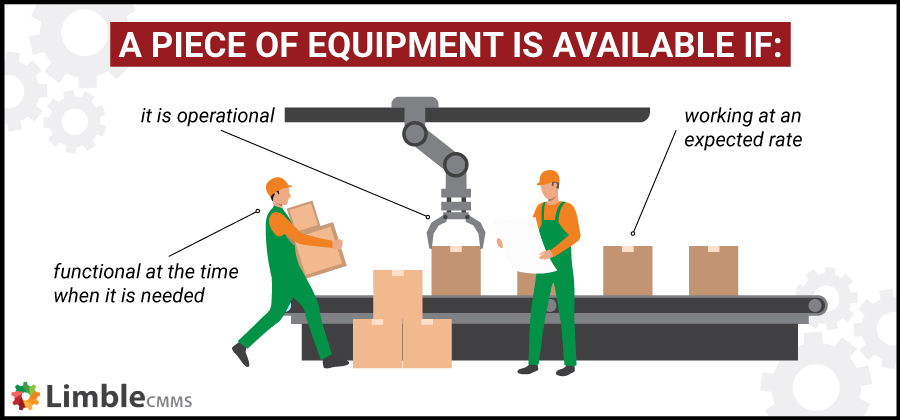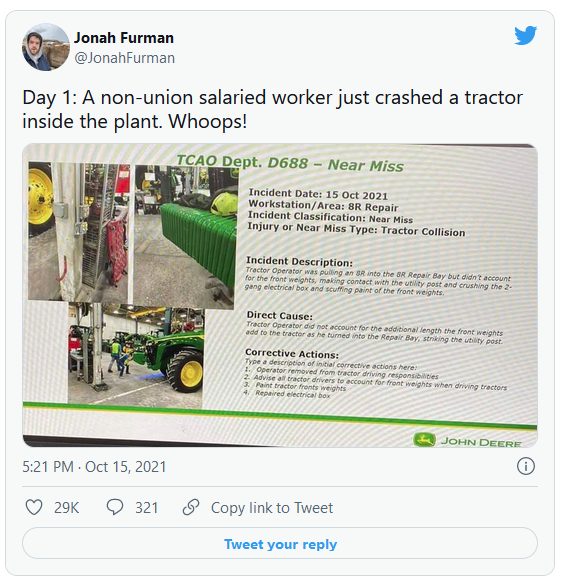Downtime
Everything you ever needed to know about downtime in maintenance.
What is downtime?
Simply put, downtime refers to a period during which a system is unavailable.

Downtime can be planned or unplanned:
- Unplanned downtime is just what it sounds like – time lost to unforeseen circumstances. Unexpected equipment breakdowns are the most common cause of unplanned downtime.
- Planned downtime is much more constructive, intentional, and rejuvenative. It is the necessary “time off” our systems and equipment take while they undergo routine maintenance.
What is common for both of these scenarios is that equipment is not available to be used for its intended function for a period of time.
Downtime affects many different industries financially, socially, and operationally. Prime examples come from the industrial sector and the IT industry where downtimes can lead to major profit losses.
Checklist for Creating a Preventive Maintenance Plan
Following a consistent Preventive Maintenance Plan can make life easier. Use this checklist to create your own!

What does downtime mean in manufacturing?
Manufacturers (and leaders in other asset-heavy industries) have been battling equipment downtime for as long as they exist. And no wonder. If machines are unavailable, no work is getting done that day.
Alongside the negative impacts on revenue generation, downtime can also disrupt our relationships and contracts with partnering companies due to the obstructed flow of input and output.
Organizations often use metrics like Mean Time To Repair (MTTR) and Mean Time Between Failure (MTBF) to track downtime and estimate the effectiveness of performed maintenance work. MTTR is not a perfect measure, but can be informative when considered as one of the downtime factors.
There are many causes of equipment downtime, and a few smart ways to prevent and manage them. We discuss those later in the article.
What does downtime mean in IT?
In the information technology industry, the definition of downtime is the time during which an IT system is offline or not operational. Network failures and outages leading to loss of productivity, loss of revenue, and hefty recovery costs are what makes up for the majority of network downtime.
The average cost of network downtime is estimated at $300k per hour. That’s a lot of reasons to keep this amount of time to a minimum.
Server unavailability can be due to shutdowns for maintenance and software upgrades, equipment breakdowns, or even due to external factors like power outages or cybersecurity attacks.
The relationship between downtime and availability
Availability measures the probability of a piece of equipment being available when needed. In other words, it shows what are the chances that a piece of equipment is fully operational during its intended work hours.

A piece of equipment is said to be available if it is:
- Operational (not out for repair and maintenance)
- Working at an expected rate (e.g. it can deliver the expected output)
- Functional at the time when it is needed (e.g. whenever the shift starts and the operator sits behind the wheel)
It is impossible to calculate system availability without knowing how much downtime the system has experienced.
Availability is obtained by dividing uptime by the total sum of uptime and downtime:

Most common causes of equipment downtime
In order to combat equipment failures and unplanned downtime, it is important to understand why they happen in the first place. You do not have to run a root cause analysis for every equipment breakdown. Some causes are fairly obvious.
Improper operations
Operator errors are one of the most common causes of equipment breakdowns.
Improper training (or its lack thereof) will, sooner or later, result in improper usage of the asset. The added pressure during emergencies or deadlines can also drive many operators to equipment mismanagement.
Similarly, an equipment operator who is not adequately trained for work on a certain machine and needs to work on it due to short staffing or unexpected absences, is more likely to be a danger for themselves, their surroundings, as well as the equipment they are using. John Deere experienced this exact issue just a few days ago.

Lack of preventive maintenance
It is easy to lose sight of preventive maintenance when everything is running fine. Especially when the workload is overwhelming and the staff is running short.
But early signs of equipment failure can be extremely subtle and easy to overlook.
Before you know it, you are experiencing downtime with no time on your hands. To combat this, maintenance teams need to understand equipment failure and apply preventive actions.
The U.S Department of Energy estimates that preventive maintenance measures can result in:
- Up to 30% reduction in maintenance costs
- 35%-45% fewer malfunctions
- Up to 75% increment in uptime
While doing preventive maintenance is a no-brainer, even good things need to be taken in moderation.
Doing excessive maintenance
For some preventative maintenance tasks, the equipment needs to be shut down and (partially) disassembled. If you do that more often than it is really needed, it means you are incurring unnecessary planned hours of downtime.
That is not all. Every time a piece of equipment is opened up for maintenance, it is exposed to a bunch of risks – damaging sensitive components during replacement, electrical wires not being properly connected, screws not being properly tightened, etc. Over time, these risks can accumulate to drive the equipment to failure.
The recent Facebook outage can serve as a good example. “During maintenance, a command was run to assess the global backbone capacity, and that command accidentally disconnected all of Facebook’s data centers.” While we do not doubt the maintenance was adequately scheduled, this illustrates how all maintenance actions carry some inherent risk.
In summary, performing too much maintenance can:
- Increase your maintenance costs
- Damage your equipment
- Waste valuable technician time
- Use too much inventory
The good news is that excessive maintenance can be easily avoided by making smart maintenance schedules using modern CMMS software.
Lack of a reliability culture
When workers are under a time crunch, they often cut corners and apply quick fixes to both big and small problems. Oftentimes, they are forced to do that because of the sheer lack of resources and the pressure to make sure there is as little downtime as possible.
If organizations continue to tolerate these and do not offer resources to mitigate the issue, it is a bit hypocritical to expect proactivity and reliability from their staff.
The Essential Guide to CMMS
Download this helpful guide to everything a CMMS has to offer.

How to reduce unplanned downtime
An ISA study looking into downtime costs shows that every factory loses between 5% and 20% of their income to a loss of productivity at the hands of unplanned downtime. Rectifying and shortening your unplanned downtime window can do wonders for your business.
Focus on preventative maintenance
Do we need to go again and explain the importance of being proactive? We hope not. If you are having trouble with a lot of downtime, develop preventive maintenance plans for problematic equipment. This should get you on the right track.
Backup equipment for critical operations
In manufacturing, backup equipment for critical operations can be extremely useful in eliminating excess downtime or idle time. A thorough analysis of the past examples of downtime events can help determine which operations are more susceptible to malfunction.
Having a replacement you can just plug in while you are fixing the issue is a godsend – albeit a very expensive one.
Buy and use machines that are more fault-tolerant
Some devices are more reliable than others. Modern equipment should be built with fault tolerance in mind. Using such equipment, by default, leads to less downtime and gives maintenance teams more time to react.
Again, such equipment comes at a price. However, anyone who is involved in buying machinery should be primarily concerned with long-term effectiveness. Equipment that is easier to maintain and is less likely to fail will often be more cost-effective, even if the initial cost gets your eyes rolling.
Develop emergency maintenance procedures
You can never completely eliminate equipment breakdowns from your production floor. And that is not the end of the world. However, it does mean you need to have a capable team and procedures in place to deal with emergency maintenance.
Include machine operators into repair and maintenance
Autonomous maintenance is an approach where machine operators are trained to take responsibility for basic maintenance tasks like cleaning, safety checks, visual inspections, and oil changes.
The benefit of this approach is threefold:
- Operators have more ownership of the equipment, which means they are more responsible when using it.
- You increase the chance that equipment issues will be spotted early.
- This frees up other maintenance personnel to concentrate on more complex maintenance work.
Each of these points, in some measure, contributes to an overall reduction in total downtime and improves asset utilization.
Want to see Limble in action? Get started for free today!
It’s time to get to work
Excess downtime isn’t going to stop happening by itself. It has to be managed.
In case of unplanned downtime, you have to find out what causes it and implement preventive measures. Band-aid solutions will only get you so far.
Planned downtime is a little bit different. It is necessary. Still, that doesn’t mean it can be scheduled whenever. If possible, use CMMS and predictive analytics to plan, organize, and execute planned downtime.
As a centralized digital maintenance platform, Limble CMMS has everything you need to stay organized and manage equipment downtime. If you are interested in learning how, schedule a demo or start a free trial.


